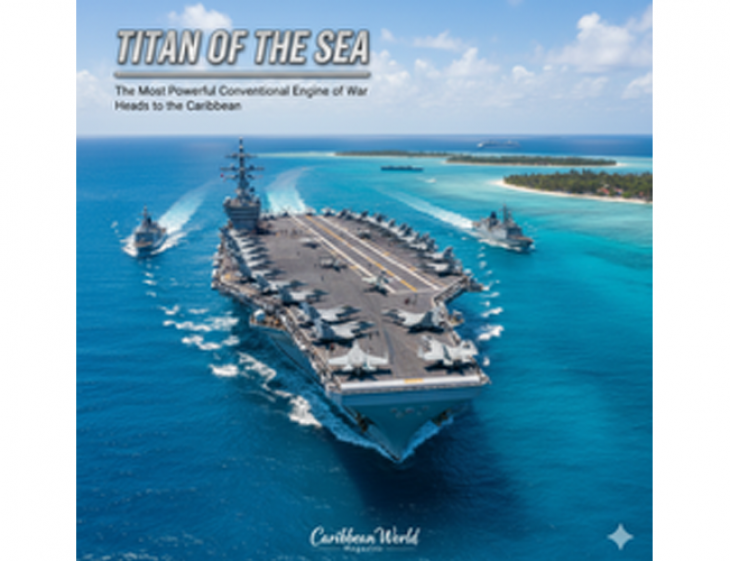
By Publisher Ray Carmen
The Caribbean seas are rarely front-page news for military gambits — until now. A new deployment of military muscle has begun making waves: the USS Gerald R. Ford, described as the “most capable, adaptable and lethal combat platform in the world”, is heading into Caribbean waters amid rising tensions in the region.
A Colossus at Sea
-
The Gerald Ford displaces over 100,000 tonnes and measures around 1,100 feet (334 metres) in length.
-
It carries thousands of personnel, a full air wing of fighter jets, electronic warfare aircraft, and helicopters — a true floating city of naval power.
-
Powered by two nuclear reactors that generate more electrical output than any of its predecessors, the ship marks a leap in maritime engineering and raw combat capability.
Why It Matters for the Caribbean
-
The deployment signals that the seas around the Caribbean — long known for tourism and trade — are also strategic front-lines in global security.
-
With growing concern over drug trafficking, regional instability and geopolitical shifts, the arrival of such a platform is a statement: the region matters.
-
For island nations, tourism hubs and littoral communities, this isn’t just a matter of naval presence — it’s a reminder that peace and stability in these waters rely on global strategic dynamics as much as on beaches and resorts.
The Bigger Picture
This isn’t about tourist postcards — it’s about power projection, deterrence and the changing face of maritime influence. For decades the Caribbean has looked outward in peace and hospitality; now it’s being viewed through a lens of global strategy and force deployment.
For our readers at Caribbean World Magazine, the message is clear: paradise sits on pivotal waters, where the world’s titans of defence periodically course through. Understanding that is part of the modern Caribbean story.




